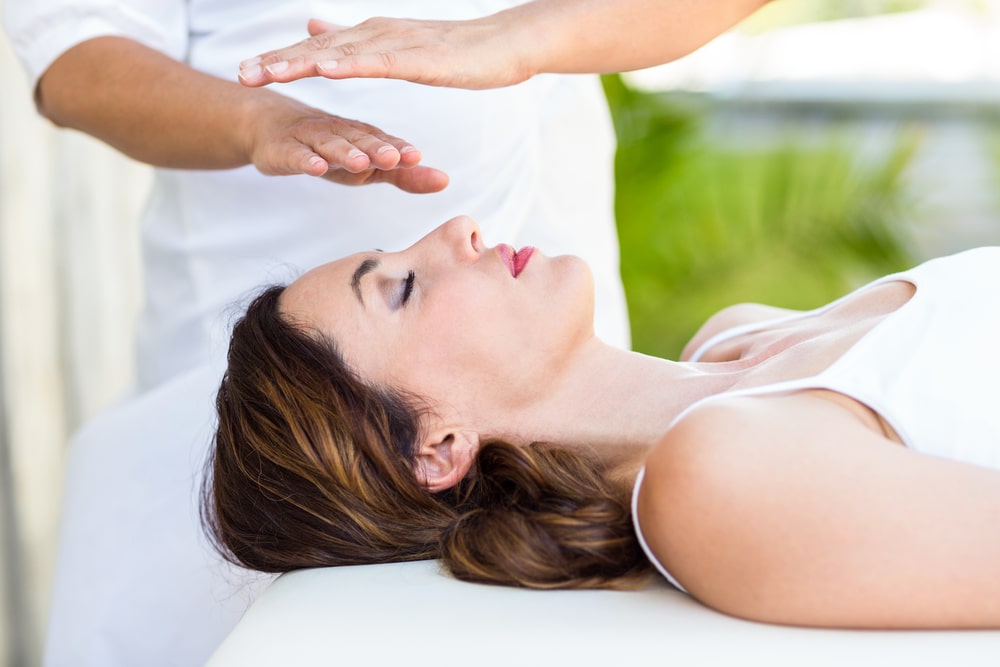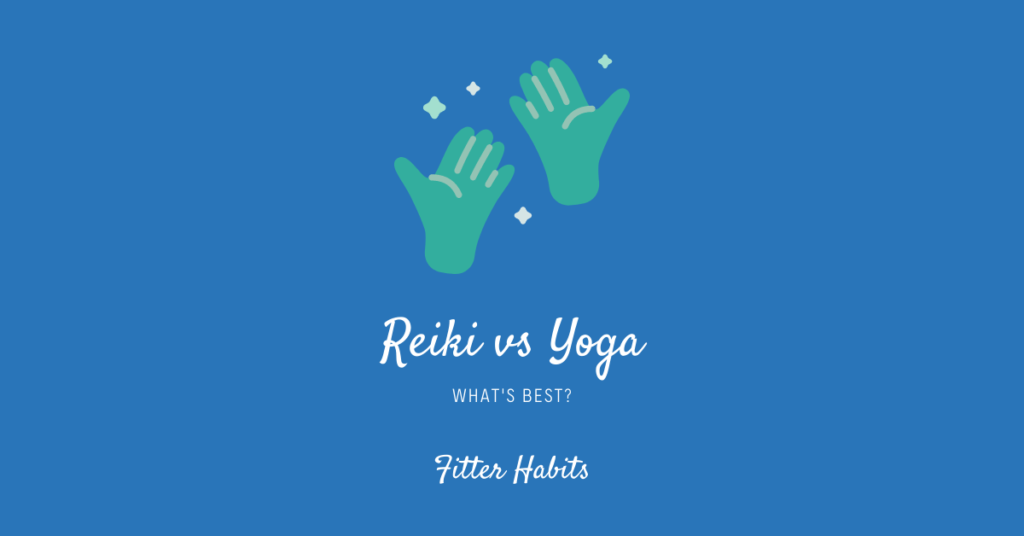Many wonder about Reiki vs Yoga. Adding Reiki techniques can enhance the spiritual elements of a yoga practice.
Blockage of energetic flow can take a lot of forms. You might have a physical block associated with body pain, a creative block, or you might be being stuck in the past emotionally, for example. Reiki and yoga are complimentary practices.
Both aim to improve energetic flow, relaxation, and healing. Adding Reiki touch techniques to your yoga practice may help you clear lingering obstacles and find more energetic flow and well-being through yoga.
Contents
What is Reiki?
Reiki is a Japanese form of natural healing, which translates roughly to “spiritually guided life force energy.” Reiki is mainly concerned with the balance and flow of universal energy, the “Ki” in Reiki, which is similar to concepts like prana or chi.
Reiki can be practiced solo, on friends or family, on patients in a medical context, and even remotely. Reiki treatments might last as little as fifteen minutes or up to ninety minutes, or even more. They can vary a lot based on the practitioner and on the recipient’s needs.
Typically, Reiki involves the practitioner laying hands on the recipient, who is lying down. The practitioner uses a light touch, in particular positions and patterns. The goals are to release energetic blocks and to improve physical and mental health.
Although Reiki is complimentary to massage therapy, in Reiki no pressure is applied. The focus is the energetic flow. Reiki hand positions are focused on the Chakras, spine, and primary internal organs.
Reiki often allows the recipient to enter a deep meditative state, or even to fall asleep. Other recipients report invigorating or healing sensations (like heat, coolness, or pulsation) from the practitioner’s touch.
Although it is difficult to research effectively, studies have generally found that Reiki does no harm and can do some good.
Origins of Reiki

Usui Reiki, the most commonly practiced form, has been in use for over one hundred years. The practice was founded by Dr. Mikao Usui, based on an epiphany he had near the end of a 21-day retreat involving fasting, meditation, and prayer. Dr. Usui founded the first Reiki clinic and school in Tokyo, in 1922.
Reiki teacher training requires going through two levels of attunement, but basic Reiki training is simple and brief. If you are interested in Reiki self-study, a self-training book written by Dr. Usui is available.
How is Yoga Different from Reiki
Yoga originated in India thousands of years ago, so long ago that there is no clear consensus about its origins. Yoga aims to ease suffering and improve energetic balance through physical, mental, and spiritual practices.
In the west, yoga classes usually focus on physical techniques for opening energetic pathways and releasing tension. These classes use movement and stretching, rather than relaxation and energy transfer as in Reiki.
However, yoga really involves a wide variety of physical and nonphysical practices. These include as nonviolence, spiritual self-discipline, good posture, breathing exercises, and meditation, for example.
Reiki and Yoga Practice
Both yoga and Reiki focus on mindfulness, energetic flow, and the relationship between mind, body and spirit. Reiki’s focus on life force energy resonates with many yogis because of the similar concept of prana.
In particular, Reiki has a lot in common with pranic healing. There are differences between reiki and pranic healing. For example, pranic healing practices typically use less physical contact, and they use specific scanning and sweeping techniques. However, overall the practices are very complementary.
Of all the forms of yoga commonly practiced in the west, Reiki is a perfect addition to restorative Yin yoga. While the yogi holds Yin yoga poses for an extend period of time the Reiki master can focus on addressing blockages in appropriate areas of the yogi’s body.
Reiki for Yoga Teachers
Receiving Reiki can be very soothing for yoga teachers who feel creatively blocked, anxious, or energetically drained from their teaching.
Yoga teachers can use Reiki on themselves, but many particularly enjoy a visit to a reiki practitioner. When you give energy to your students it can be particularly invigorating to be the recipient of another healer’s energetic attention.
Reiki for Yoga Students
Integrating Reiki into yoga classes can have a powerful effect on yoga students’ wellness.
When making physical adjustments to students’ bodies (with consent), yoga instructors can use Reiki touch on specific areas of the student’s body to enhance the student’s experience. One simple example is for the instructor to touch a student’s third gently eye during savasana.
Alternatively, instructors can show students how they can use Reiki practices on themselves during asanas. For example, students can apply Reiki touch to their own feet during Baddha Konasana (bound angle or cobbler’s pose).
Pros and Cons of Adding Reiki to Your Yoga Practice
If you are trying to decide whether or not to add Reiki to a yoga practice, there are several factors to consider.
Final Word: Reiki vs. Yoga
If your yoga practice is short on prana work, consider adding Reiki touch. Because it is so gentle, it is a technique you can practice on yourself, and it requires no equipment, there is little downside to giving it a try. You might find that it contributes to your balance and energetic flow, both on and off the yoga mat.
If you liked this post, you might also be interested in our yoga vs. Qigong guide helpful.



